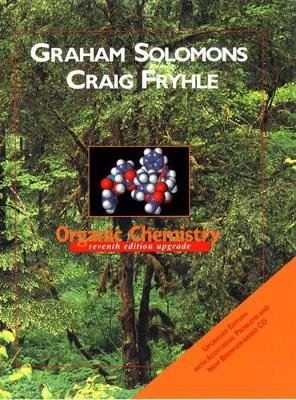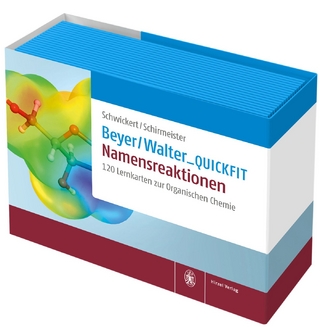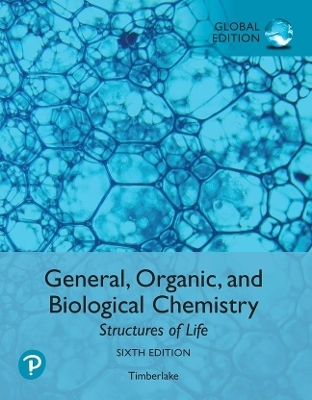
Organic Chemistry
John Wiley and Sons (WIE)
978-0-471-41803-0 (ISBN)
- Titel ist leider vergriffen;
keine Neuauflage - Artikel merken
T. W. Graham Solomons did his undergraduate work at The Citadel and received his doctorate in organic chemistry in 1959 from Duke University where he worked with C. K. Bradsher. Following this he was a Sloan Foundation Postdoctoral Fellow at the University of Rochester where he worked with V. Boekelheide. In 1960 he became a charter member of the faculty of the Univrsity of South Florida and became Professor of Chemistry in 1973. In 1992 he was made Professor Emeritus. In 1994 he was a visiting professor with the Faculte des Sciences Pharmaceutiques et Biologiques, Universite Rene Descartes (Paris V). He is a memeber of Sigma Xi, Phi Lambda Upsilon, and Sigma Pi Sigma. He has received research grants from the Research Corporation and the American Chemical Society Petroleum Research Fund. For several years he was director of an NSF-sponsored Undergraduate Research Participation Program at USF. His research interest have been the areas of heterocyclic chemistry and unusual aromatic compounds. He has published papers in the Journal of the American Chemical Society, the Journal of Organic Chemistry, and the Journal of Heterocyclic Chemistry. He has received several awards for distinguished teaching. His organic chemistry textbooks have been widely used in 20 years and have been translated inot Japanese, Chinese, Korean, Malaysian, Arabic, Portuguese, Spanish and Italian. He and his wife Judith have a daughter who is a geophysicist and two younger one. Craig Barton Fryhle is Associate Professor and Chair of the Department of Chemistry at Pacific Lutheran University. He earned his B.A. degree from Gettysburg College and Ph.D. from Brown University. Professor Fryhle's research interests relate to enzymes and metabolites of the shikimic acid pathway. His current research involves conformational studies of shikmate pathway substrates and analogues by molecular modeling and NMR spectrometry, and structure and reactivity studies of enzymes in the shikimic acid pathway. He has received research and instrumentation grants from the National Science Foundation, the M. J. Murdock Charitable Trust, and other private foundations. Professor Fryhle's work in chemical education has involved incorporation of active and computer-based learning strategies in organic chemistry, development of new experiments for undergraduate organic and instrumental analysis courses, and background work on the previous edition of this text. He is a volunteer with hands-on science programs in Seattle public schools. He was the 1999 Chair of the Puget Sound Section of the American Chemical Society. He lives in Seattle with his wife Deanna, and daughters Lauren and Heather.
Carbon Compounds and Chemical Bonds. Representative Carbon Compounds: Functional Groups, Intermolecular Forces, and Infrared (IR) Spectroscopy. An Introduction to Organic Reactions: Acids and Bases. Alkanes: Nomenclature, Conformational Analysis, and an Introduction to Synthesis. Stereochemistry: Chiral Molecules. Ionic ReactionsNucleophilic Substitution and Elimination Reactions of Alkyl Halides. Alkenes and Alkynes I: Properties and Synthesis, Elimination Reactions of Alkyl Halides. Alkenes and Alkynes II: Addition Reactions. Nuclear Magnetic Resonance and Mass Spectrometry: Tools for Structure Determination. Radical Reactions. Alcohols and Ethers. Alcohols from Carbonyl Compounds: OxidationReduction and Organometallic Compounds. Conjugated Unsaturated Systems. Aromatic Compounds. Reactions of Aromatic Compounds. Aldehydes and Ketones I: Nucleophilic Addition to the Carbonyl Group. Aldehydes and Ketones II: Aldol Reactions. Carboxylic Acids and Their Derivatives: Nucleophilic Addition-Elimination at the Acyl Carbon. Synthesis and Reactions of -Dicarbonyl Compounds: More Chemistry of Enolate Anions. Amines. Phenols and Aryl Halides: Nucleophilic Aromatic Substitution. Carbohydrates. Lipids. Amino Acids and Proteins. Nucleic Acids and Protein Synthesis. Answers to Selected Problems. Glossary. Illustration and Photo Credits. Index. Appendix A: Upgrade Edition Additional Problems. Appendix B: Answers to Upgraded Edition Additional Problems.
| Erscheint lt. Verlag | 22.7.2003 |
|---|---|
| Überarbeitung | Craig Fryhle |
| Zusatzinfo | Illustrations (some col.) |
| Verlagsort | New York |
| Sprache | englisch |
| Maße | 211 x 263 mm |
| Gewicht | 2621 g |
| Themenwelt | Naturwissenschaften ► Chemie ► Organische Chemie |
| ISBN-10 | 0-471-41803-X / 047141803X |
| ISBN-13 | 978-0-471-41803-0 / 9780471418030 |
| Zustand | Neuware |
| Haben Sie eine Frage zum Produkt? |
aus dem Bereich

![Organic Chemistry plus Pearson Mastering Chemistry with Pearson eText [Global Edition] - Leroy Wade; Jan Simek](/media/110496757)
